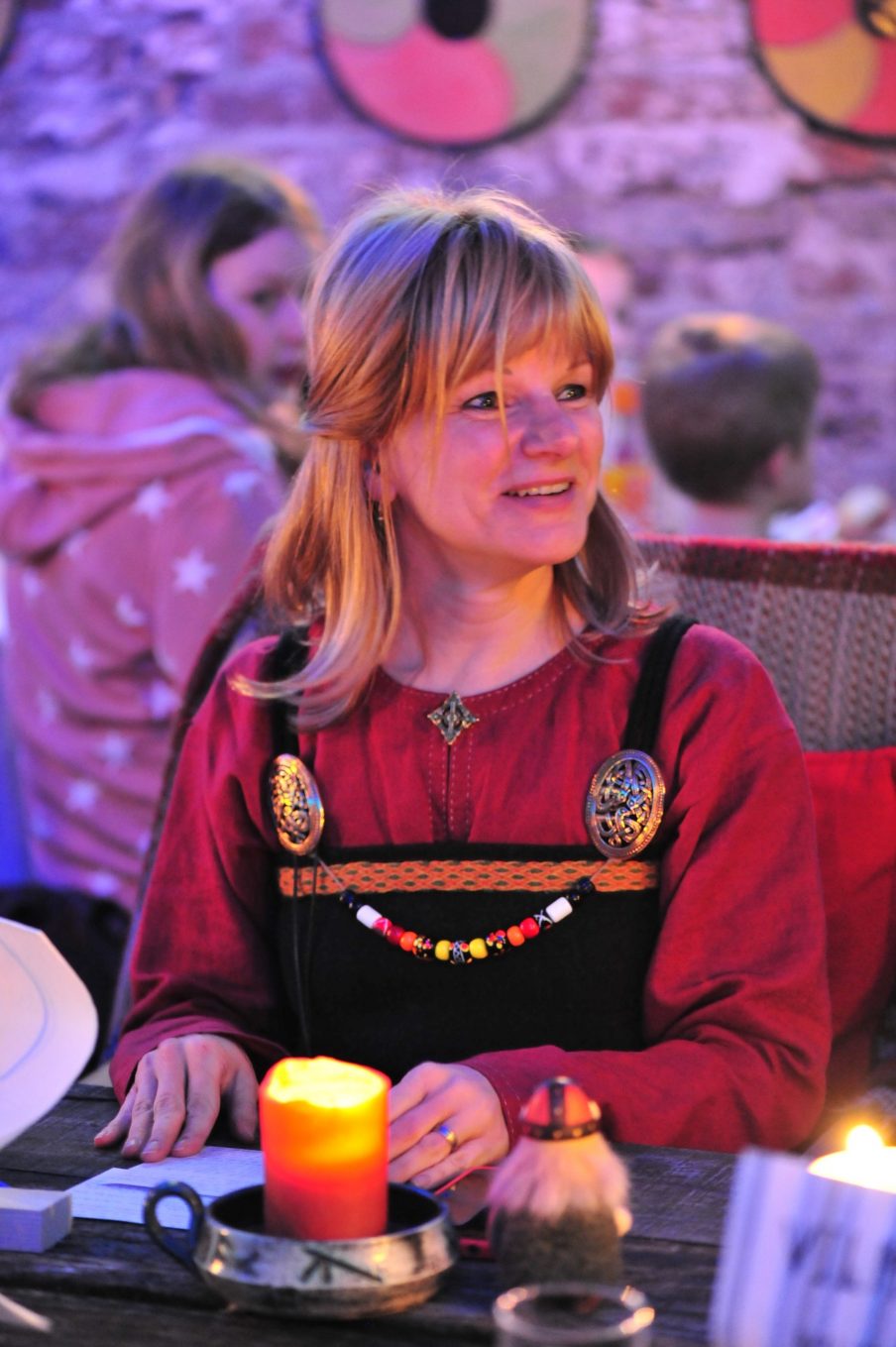
When Viking research turns personal
From a safe distance to hands-on and real
One question every author of historical fiction is asked is “How do you do your research?”, and then we most likely explain it like this: I have the usual array (or let’s say: addiction to) books about the era and specific aspects of the time (women’s lives in the era). My all-time favourite is an absolutely rich book I always consult: Hjardar/Vike’s “Vikings at War”. Unprecedented detail in text, maps, and depictions for all the Viking research needed.
Then we add that of course we go online for more research. We collect pictures, maps, articles. I have a Pinterest board (https://www.pinterest.de/sarahdahl13), where I collect my favourite visual inspiration. This, and a lot more, can be done from home, behind the desk. Entire worlds a few clicks away.
The next step would be to put on pants and actually go outside, to do a journey of sorts, because unlike contemporary authors, us histfic folk have to travel a bit to reach a certain place of interest for more hands-on research. I’m talking museums, battlefields, graveyards, ruins, whatever. In my case, all of those make sense: the Viking times were violent and rich in cultural exchange. I can get just as excited over a bump in the grass that contains a grave as I can enjoy looking at a heap of stones that once was an early medieval wall.
The challenge is to really envision life and people behind these artefacts. Sometimes it’s impossible, sometimes quite easy: imagination runs wild, and with it begin stories. My main interest is always the people and possible stories behind these cold, hard (arte)facts. This is how most of my plots start: during outdoor research, inspired by a place.
The magic of Viking Hedeby/Haithabu
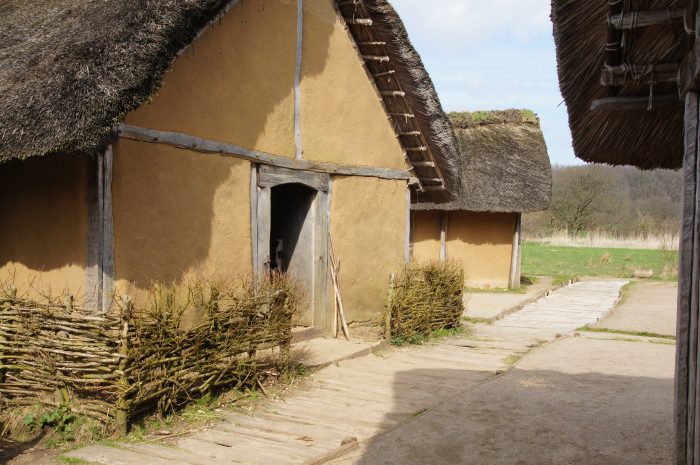
A place I’m particularly fond of is Hedeby in northern Germany. Not just because it is actually within reach for me in my Dreiländereck – but because it has it all: a modern, interactive museum with all the beautiful artefacts you could wish for, really bringing the era to life. But most important, there’s an open-air reconstruction of the Viking town in the actual historically correct place. So not only some houses and paths are erected again and ready to experience “live”, but the landscape is pretty much still what it was in those times, too. I can stand high on the protective wall and look down at the small settlement and imagine people walking the streets. I can envision the jetties where once dragonboats and merchants’ ships were moored. I can feel the harsh wind and hear the reeds rustle that still so densly border the Slien fjord. I can walk away from the settlement and into the fields and encounter massive runestones with original inscriptions. I really get a feel for the place and era. And every time, new story ideas form.
So this has become a habit now: every year I take a long weekend off to drive up to Schleswig and revisit my favourite place of inspiration. I just take time to be there, discover more details in the wood of the houses, the frameworks, the landscape. I let more stories unfold just by sitting on a bench, or watching a reenactor stir herbs to dye wool in a big pot. Driving home, I always have to pull over and take more notes.
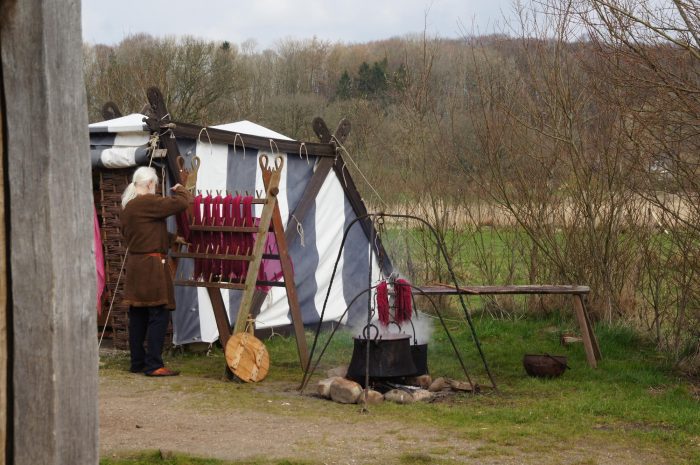
Here is also where my research took another unexpected turn. Hedeby hosts several markets; and I attended the Viking spring market. It does something to a writer when she suddenly walks among her characters as they come alive with frightening vitality. Yes, I totally stalked some of them. The white-bearded guy with braided hair and tattoos. The incredibly handsome sword figther with the thoughtful face. The storyteller lady who captured an audience with a swipe of her staff.
And the colours, the smells! It’s almost shocking to be standing in the world you so far just imagined. You see the colour of their cheese, the texture of their bread, and the vivid patterns of their dresses. You inhale the scent of baking, cooking, sheepskins, and fires.
I never imagined actually HOW dark it is inside a Viking house once the door closes! But sitting on furs around the fire with other Vikings and a storyteller is mind-blowing. I didn’t want to leave! And when the door opened again, a ray of light hit a bump right behind me – it was so dark, I had overlooked sleeping kids within an arms-length. I suddenly had to acknowledge that I was stretching reality in my stories, in that I had made the houses much brighter to have the stories work. My protagonists need to see their opponent’s expressions and movements much clearer than what was obviously possible. We all have to stretch reality a little at times, especially for today’s readers. But I drove home deep in thought.
Becoming what you write: a revelation
Another thing the market did was: I had so far only seen myself as an observer, not a participant. I use the knowledge of Viking reenactors to discuss my plots and characters, but I didn’t want to take part in markets, I just visited them, and took notes. Until then, at Hedeby.
I suddenly craved a dress and all that comes with it. But as a Viking dress contains many pieces (including jewellery and tools), and it has to be hand-made in the ancient craft, I found it too expensive an experiment if I didn’t plan to participate in markets. Until my birthday loomed and I thought I want a real feast: a Viking feast in a barn, in a dress of my own!
So that’s when my research became very personal and I commissioned Danish seamstresses to make me a dress. I chose fitting brooches and beads to go with it, crafted after original finds. I chose every single bead according to its correct time period and location: Hedeby, 10th century. It was the most exciting thing I’ve ever put together.
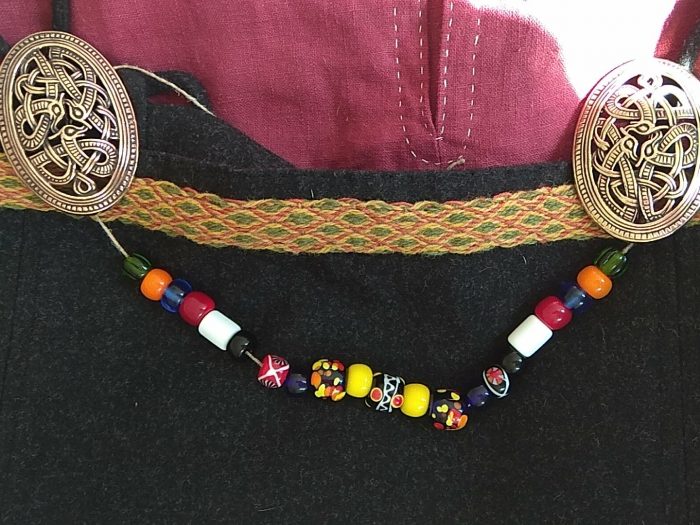
The day of fitting then wasn’t only a transformation, it was a revelation: as layer upon layer of clothing slipped over my head, I turned from an observer into more than a participant – I “became” something new. Suddenly everything I had studied and written about was ON me, became part of me. The rough fabrics, the smooth flow of the dress around my ankles. The glint of the brooches and clinging of the beads. I was a little in shock and a lot in awe when I saw myself in the mirror. It does something to you when you suddenly “become” what you write.
I now know what it feels like to prick yourself in the attempt to fix the beads to the brooches. What they sound like when I walk. How warm but light the linen and wool-combination feels.
And since that amazing birthday feast I also know what it’s like to swing a real Viking axe, made by a Norwegian smith (using ancient craftsmanship)! My “shieldmaiden axe” was the incredible birthday gift my husband had ordered made to my tiny measures. It’s awe-inspiring to hold and touch, let alone cut logs with!
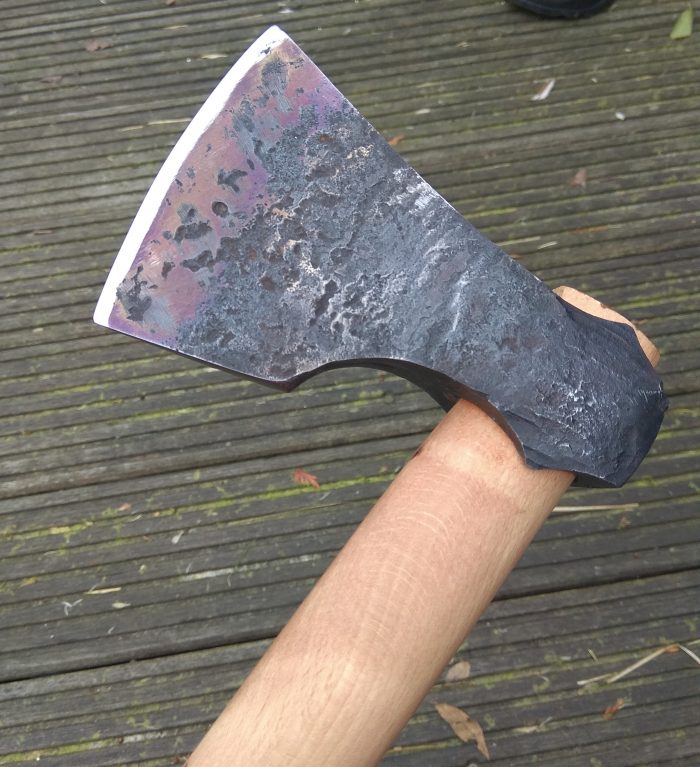
So if these days someone asks me “How do you do your research?” I skip the boring books and online part. I hold up the beads I often wear around my wrist, and I might take the shiny axe off the wall and hold it out to the enquirer.
It always, always silences both parties for a long while: to weigh the ancient stuff in your hand and “feel” history is more than inspiring: it’s awe-inspiring. And then to imagine the people who might have lived and died in the times …
It’s so much stronger than my words.
Happy reading & writing!
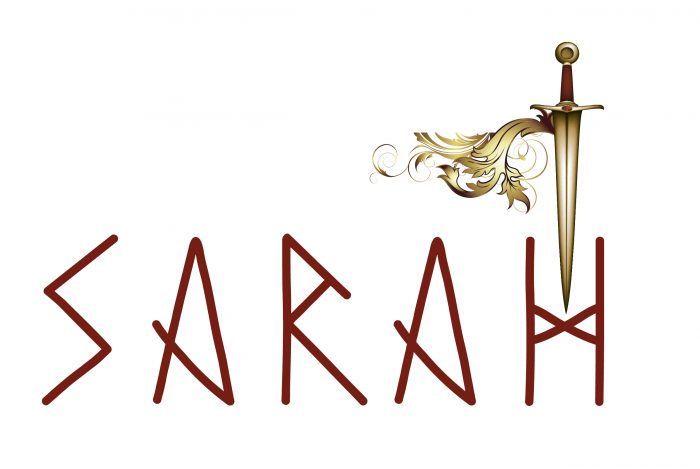
What is your approach to research and how do you embrace what you’re writing about? And as a reader: Can you tell when a writer has actually done more than research from a distance? Do you feel more part of the experience and characters, as if the author ‘had been there’, experienced it? Tell us in the comments!

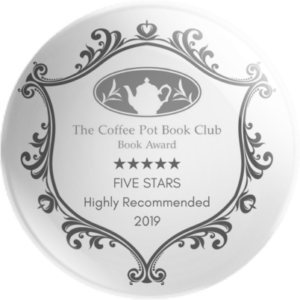
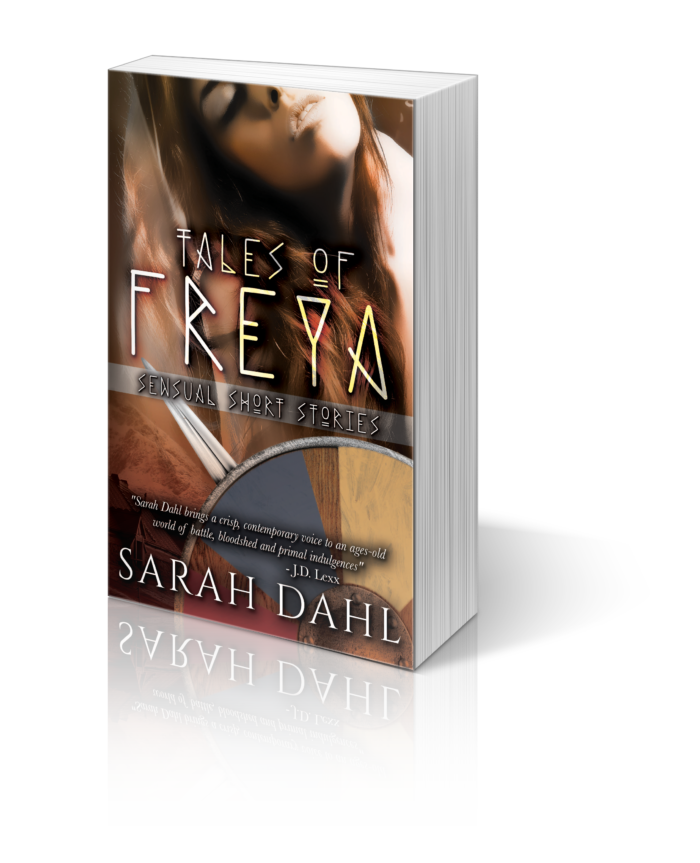
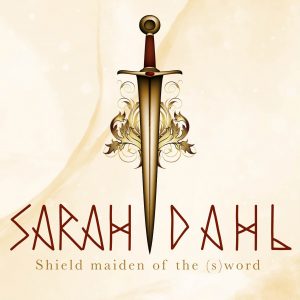
Comments (2)